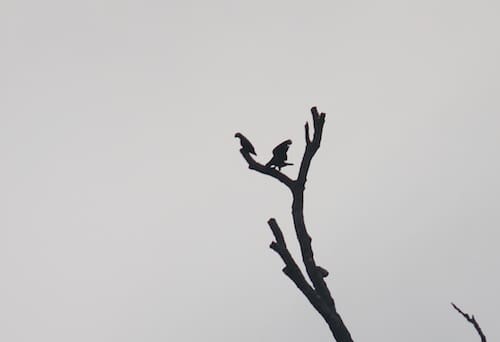By Dr. Rowan Martin (Director WPT Africa Conservation Programme)
“Wow!” I whispered, barely containing my excitement. In front of us was a pair of Timneh parrots, engaging in what appeared to be a courtship display. There was a distinctive ‘head bob’ followed by a clamping together of beaks and the regurgitation of food (I’m sure there is a more romantic term for this). Then, some playful nibbling, more bobbing, and more feeding. After a few minutes the male sidled up to the female, lent in for a nibble and reached over his leg, cloacas met and the act was complete (I’m sure there is a more romantic term for this as well). I looked over at Momoh and Arnold, and we all smiled. “Wow”.

We already knew we were in a special place. Since setting off just after dawn to survey for Timneh parrots we had already encountered numerous small groups flying over and foraging. As the mist lifted on the morning there was a sense the parrots were becoming more active. We were in a remote coastal region of Sierra Leone, one of only five small West African countries where Timneh parrots occur. Since 2018 WPT has been working with local ornithologists in Sierra Leone, Momoh Sesay and Professor Arnold Okoni-Williams of Fourah Bay College of the University of Sierra Leone and Sigma Nature, to determine the status of these parrots and importantly to identify ‘hotspots’ and strategies to protect them.
Timneh parrots were only recognised as a distinct species by the IUCN in 2012 and in 2016 they were categorised as globally Endangered. While little is known about numbers in the wild, it’s clear that they are much rarer than their brighter, brasher cousins, the African Greys and recent findings elsewhere have given us cause for concern. Research conducted by WPT and partners in Guinea-Bissau, suggests there are no more than a 1,000 in the entire country and probably far fewer. The remaining population is largely restricted to just two tiny and remote islands. Fortunately, initiatives led by IBAP, with the support of WPT, have been successful in working with the local communities that own these islands to find alternatives to trapping. For now, the tiny populations appear stable, but there is an urgent need to build on these efforts to protect wild populations elsewhere.

In Sierra Leone, the focus has been on rapid assessments of five areas in the more forested, southern and eastern parts of the country. In particular attention is on potentially suitable, patches of habitat outside of existing National parks and other protected areas, which have received little research attention to date. Adapting an approach developed in Guinea-Bissau, the surveys have combined direct observations with interviews with local community members. The people who live alongside this wildlife every day have a vast knowledge of the wildlife and their lives are deeply entwined with the threats parrots face. As well as gaining insight into the status of the parrots we also wanted to understand people’s attitudes and values and initiate discussions about effective conservation approaches.
A number of the people interviewed admitted to having captured Timneh parrots, and described how they sold these to middlemen or took them to the capital, Freetown. Parrots would be transported on public boats along the coast and across borders to neighbouring countries. Interviews with law enforcement officials verified this route. Guinea has historically been a major exporter of both Timneh and Grey parrots and in the mid 2000s issued CITES permits annually for exports of wild parrots greater than the entire estimated national population. Many more were exported as captive-bred despite there being no captive-breeding facilities. In 2017 these ‘loopholes’ were fortunately closed down when CITES transferred the species to Appendix I. The government of Sierra Leone strongly supported this change, seeing it as a vital tool to help them protect their valuable wildlife heritage.
Research also uncovered a small but possibly significant local trade in parrots as pets. Timneh parrots were found for sale on a market stall in Freetown and several pet owners were identified. Many of the people interviewed were unaware that Timneh parrots were a globally threatened species while a similar number did not know that the trapping and sale was prohibited under national law. These findings suggested that significant gains could be made through raising awareness and that even apparently small actions can make a difference. Following outreach by Momoh Sesay the Freetown stall holder no longer sells parrots.

Encouragingly, the National Protected Areas Authority (NPAA) of Sierra Leone, which is the national government body that oversees the implementation of wildlife trade laws, is taking action. Following a tip off in 2018 a group of Timneh parrots were seized in a village not far from this recently identified breeding area in Moyamba district. The parrots were found together with a baby chimpanzee, and all were reportedly en route for an ex-pat working at a nearby mine. Tacugama Chimpanzee Sanctuary stepped up to take in the chimp and the parrots. With support from the WPT the parrots have been well cared for and rehabilitated.
Direct observational surveys were also a central part of the investigations, and complemented information obtained through interviews. At each site we walked a number of recce transects collecting data as we went. Much of the coast of Sierra Leone is cloaked in mangrove forests and in many places the tangled mass of roots and branches rising from deep, sucking mud is all but impenetrable on foot. On several occasions the team took to boats to conduct surveys within extensive areas of mangroves. Although both African Grey and Timneh parrots are known to frequent mangroves, they are more commonly thought of as birds of the closed canopy rainforest. Yet the most sightings of Timneh parrots were made in mangrove areas. It’s possible that due to its inaccessibility, these swampy areas act as vital refuges for parrots in the region.

Multiple surveys of some of the most extensive areas of rainforest in Sierra Leone, such as the Gola rainforest National Park, have found numbers of Timneh parrots to be extremely low. Either such habitats are not as important as once thought, or populations in these relatively accessible areas have collapsed. Our attempts to verify reports of roosts used by large numbers of parrots just outside the national park found no signs these roosts still existed. Suggesting sadly that numbers have been driven perilously low by heavy trapping.
Against this backdrop, the sense of joy among our team in seeing signs of breeding was even greater. There was no doubt this was a deeply precious site. Just as in Guinea-Bissau this ‘island’ of forest had been protected in part through its remote location. The challenge now is to ensure these sites, which are becoming increasingly rare, receive adequate protection, supported by local communities, government and the international community.

